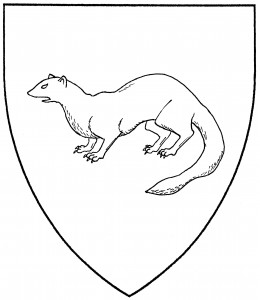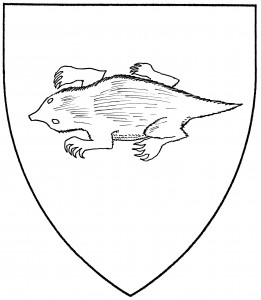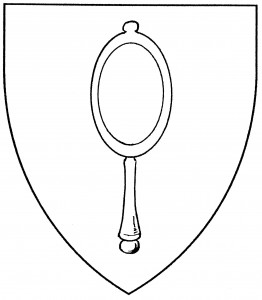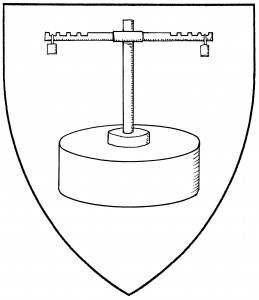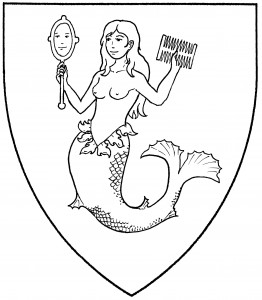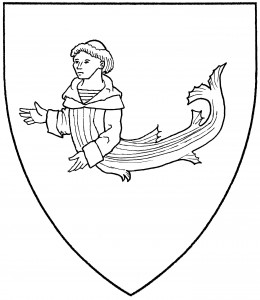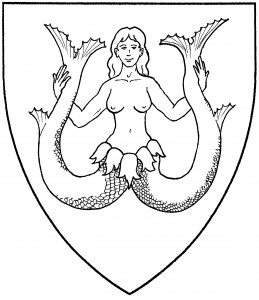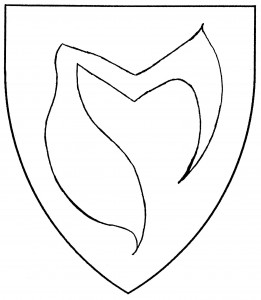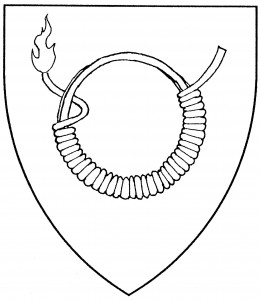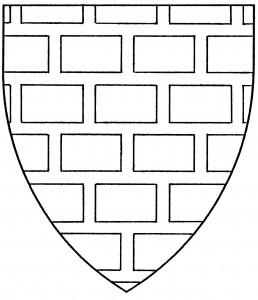As used in heraldry, the term “monster” describes any creature not found in nature: a fabulous beastie, a product of the imagination. Some heraldic monsters were thought to represent actual beasts (e.g., the antelope), but their forms differ so widely from the natural beasts that they are considered separate and imaginary creatures. In such cases, if the natural beast is intended, the term “natural” must be included in the blazon; otherwise, the heraldic monster is used.
There are some special categories of monsters, classed by their form or construction. These include: chimerical monsters, humanoid monsters, sea-monsters, and winged monsters.
For specific monsters, see: allocamelus, alphyn, amphisbaena, antelope, bagwyn, bog beast, boreyne, calamarie (kraken), calygreyhound, camelopard, centaur, chatloup, chimera, cockatrice, dragon, enfield, griffin, harpy, hippogriff, Hrassvelg monster, ibex, lamia, lion-dragon, man-serpent, manticore, man-tyger, mermaid, musimon, naga, Norse beasts, opinicus, orm, pantheon, panther, pegasus, phoenix, piping beast, pithon, salamander, sea-horse, sea-lion, senmurv, silkie, sphinx, tarasque, theow, tyger, unicorn, vegetable lamb, werewolf, yale, ypotryll.
